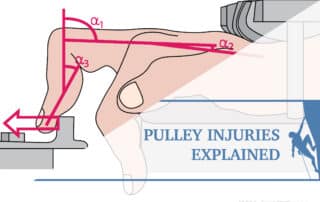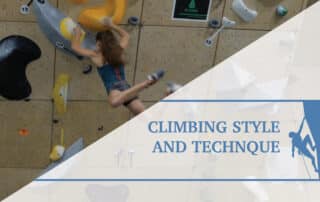Improve Your Finger Circulation For Climbing
Do you ever wonder why it is so hard to keep your fingers warm when climbing? Are you interested in strategies to keep the circulation flowing while you climb? Well, this article will go in-depth into several ways how to keep the blood flowing and will use a case study of a climber [...]
Climber Wrist Stability and Sensory Motor Control Training
I was seeing a rock climber, she was a 22-year-old female, and she reported after a long session of bouldering that she would have wrist instability, as well as pain. I assessed her wrist mobility, and it was hypermobile, meaning it moved too much. In addition, I assessed her joint position error testing [...]
Dupuytren’s Disease in Rock Climbers
If a climber presents with palmar nodules in their hand—mostly the ring finger, followed potentially by the little and middle fingers—they may have something called Dupuytren’s disease, also known as Dupuytren’s contracture. This is typically not painful, and it may potentially be genetic. See below for a description of the symptoms Location Palmer [...]
Lateral Elbow Pain Diagnostics Climbing
If a patient presents with lateral elbow pain, it's possible they have lateral epicondylitis, lateral epicondylosis, or lateral epicondylalgia. In order to differentiate these symptoms and diagnoses, it's important for the clinician to take the climber through various sets of movements and screens. Pain Location Lateral Epicondyle, the bony prominence on the outside [...]
Pulley Injury Anatomy, Biomechanics and Research
Finger pulley injuries are the most common injury with rock climbers. In order to understand pulley sprains, we need to understand the anatomy first. So, let’s discuss the pulleys in the fingers. Five of them are annular Three of them are cruciate The flexor digitorum superficialis and flexor digitorum profundus both pass under the [...]
Train Climbing Route Speed, Movement Cadence and Technique
In this article, we will take a closer look at train climbing route speed, movement cadence, and technique. When analyzing climbing movement, there are five key components to look at: speed, hold contact, intensity, style, and alignment. Let's begin by first looking at speed. Static Climbing Movement The below video displays a climber [...]






